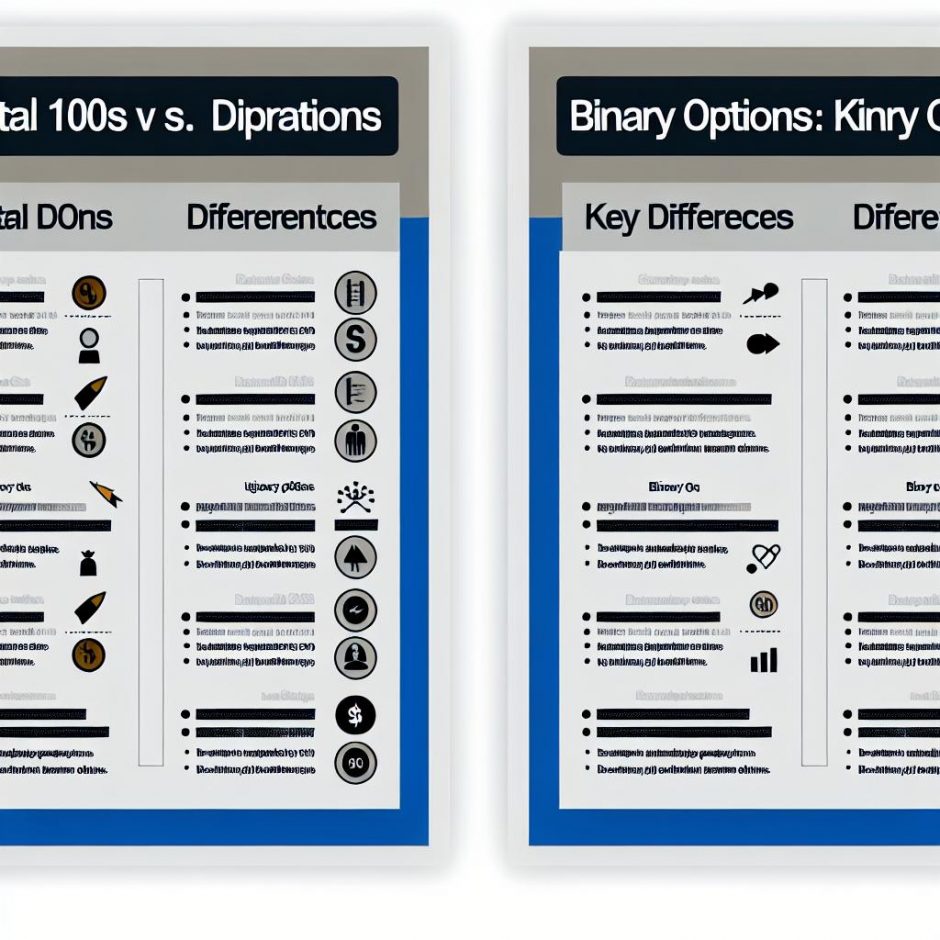Understanding Digital 100s and Binary Options
Digital 100s and binary options represent unique financial instruments that provide traders with opportunities to profit from short-term market predictions. These instruments are particularly popular among traders who prefer quick results and are comfortable with making decisions based on their market forecasts. Despite their similarities, such as an all-or-nothing payout structure, Digital 100s and binary options differ in several significant ways. This article aims to delve deeper into these differences to aid investors in making informed decisions.
Definitions and Basics
Digital 100s, sometimes referred to as fixed-odds financial bets, present traders with the opportunity to make predictions on whether a specific event will occur within a defined period. For instance, an investor might predict that a stock index will exceed a certain level by the closing of the market. The appeal of Digital 100s lies in its simplicity: if the predicted event takes place, the trader receives a predetermined payout. Conversely, if the event does not materialize, the trader loses the amount initially invested.
Conversely, binary options are a form of financial derivatives that poses the trader a straightforward question: will the price of a particular asset go above or below a set benchmark by a specific time? The focus is on forecast accuracy concerning the price movement of assets, which can range from currencies and commodities to stocks. The outcome, once determined, dictates the payout or loss, making the mechanics of binary options easy to grasp yet challenging to master.
Regulation and Availability
The distinction between Digital 100s and binary options extends into the realm of regulation. Digital 100s align more closely with betting products and, as such, are often subject to regulation by gambling authorities. Depending on the jurisdiction, they might also be governed by local financial regulations. The availability of Digital 100s can vary significantly across different regions, subject to local laws and the presence of regulatory frameworks.
Binary options, however, fall within the domain of financial derivatives and are typically offered by firms operating under financial services licenses. This regulatory oversight is crucial as it frames the legitimacy and operation of these trading activities. Due to concerns over potential misuse and fraud, several jurisdictions, including parts of Europe and North America, have heavily restricted or outright banned binary options trading. This limits the accessibility and appeal of binary options in these regions.
Trading Environment
The platforms that offer Digital 100s are often designed to be user-friendly, catering primarily to casual traders or those entering the financial trading world. The environment is akin to a sports betting platform, where odds and potential returns are explicitly laid out, allowing traders to make evaluations based on straightforward propositions.
In contrast, platforms that deal with binary options tend to be more complex, often aimed at traders with previous experience in financial markets. Broker platforms for binary options provide various trading tools and resources, including technical analysis, charting options, and educational content. This is beneficial for traders who wish to deepen their understanding and enhance their strategic approaches to market predictions.
Payout Structure and Risk
In terms of the Digital 100s payout structure, outcomes are determined by the odds set by the service provider. When a prediction proves correct, the trader is rewarded with a fixed payout based on these odds. Conversely, incorrect predictions result in the loss of the original stake. This approach resonates with those familiar with betting models, given its clarity and simplicity.
With binary options, the payout structure is predefined arbitrage, with returns generally falling between 70% and 90%. This payout is consistent regardless of the degree to which an asset exceeds or falls below the strike price. This feature allows traders to calculate potential risks and rewards prior to executing a trade, facilitating meticulous risk management. Losses are strictly confined to the invested amount, which is a reassuring factor for many investors who prefer to keep potential downsides checked.
Conclusion
Despite sharing certain characteristics, Digital 100s and binary options cater to different types of investors due to their distinct features and the environments in which they are traded. Digital 100s, with their betting-style approach, may appeal to those who favor simplicity and straightforwardness in trading scenarios. Meanwhile, binary options can offer an attractive proposition for traders interested in deeper market engagement and strategic trading, provided they navigate the regulated environments effectively.
Selecting the most suitable trading instrument requires a comprehensive understanding of these differences. Traders must align their preferences with financial goals, market insight, and risk tolerance to optimize the potential benefits of these financial instruments. For those eager to learn more, exploring reliable financial services platforms that provide detailed guides and educational materials can further enhance their trading acumen and success.
This article was last updated on: March 9, 2025
